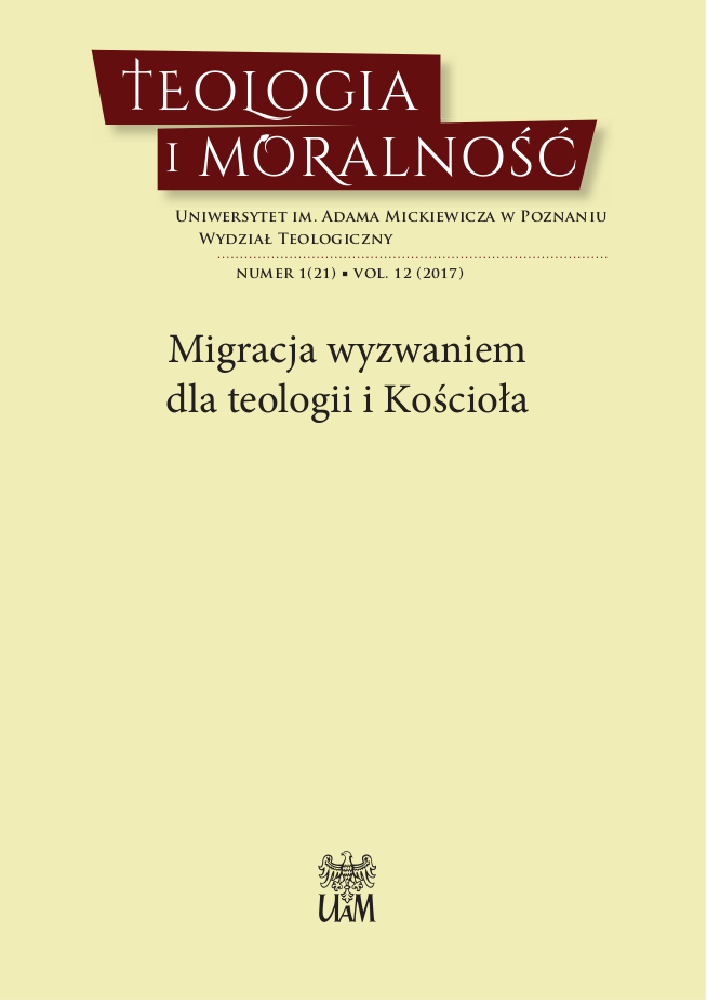Abstract
Cultural and religious pluralism has become a fact in the West. Actually, old European states have hosted not only “native people” but also the “others.” With time those “other” people – representatives of different cultures and religions – were becoming “natives” in a sense. The experience of pluralism in public life involves getting to know one another, which leads to the elimination of prejudices.
Christians and those who used to be Christians live side by side with various non-Christian cultures and traditions. Over the ages, non-Christian cultures and religions occupied specific geographic territories with strictly defined boundaries. At present, they are distributed across all continents. Religions are an integral part of non-Christian cultures. Each of them is characterised by an original doctrine, unique cult, morality and organisation with a particular authority at the helm. Followers of various religions and specific ideologies live in the same environments, i.e. multicultural milieux.
The phenomenon of “otherness” is part and parcel of human history, civilisation and culture. Descriptions of anthropogenesis, offered by various religious traditions, already identify what is “other” and what forms a more or less coherent whole. Human beings would not be their real selves if no “others” were around them. We are who we are thanks to “others.”
The 20th century was a time of a raging hatred of the “other”, generated by utopian systems glorifying some people while annihilating others. Utopias, philosophical fictions and mythologies of the 20th century were the quintessence of the aberrations of human thought. The second half of that century saw the gradual recovery from the effects of wars that are always a culmination of violence, cruelty and ruthlessness.
The path of integration can be found by discovering forgotten brotherhood, reinterpreting the past and overcoming the prejudices and grudges resulting from the bad past, affirming the identity of one’s own and others, and tolerance. Dialogue, in its various forms and manifestations, is a means to overcome strangeness and establish community ties.
Since ancient times, the Bible has been the book of dialogue and “integration” between ancient cultures, and between human beings and God. Jesus Christ is a model for dialogue and integration as vividly illustrated by the Gospel. Jesus never rejected anyone and He was never indifferent to “other” people. He was always open to dialogue even if it was very difficult. Jesus Christ appears very clearly as the one who integrates human beings with themselves, with other human beings as well as small communities such as the family and large communities such as nations and the Church. He is a model of community integration in its various references and manifestations.
References
Boużyk M., Kiedy Inny jest swój? Relacje międzyosobowe podstawą wielokulturowości. Kilka uwag w świetle realistycznej filozofii klasycznej, „Forum Pedagogiczne” 2013 nr 1, s. 31-58.
Bronk A., Kultura/Kultury, w: Leksykon religii. Zjawiska – dzieje – idee, red. H. Waldenfels, Warszawa 1997, s. 209-212.
Cianciara D., Aspekty wielokulturowości w dzisiejszej Polsce, „Problemy Higieny i Epidemiologii” 93(2012) nr 1, s. 128-135.
Daszkiewicz W., Wielokulturowość a ideologia multikulturalizmu, „Cywilizacja” 2010 nr 33, s. 196-199.
Dokumentation zum Weltethos, red. H. Küng, München 2002.
Gęsiak L., Wielokulturowość. Rola religii w dynamice zjawiska, Kraków 2007.
Idea wielokulturowości jako wyzwanie. Dyskurs religijny, kulturowy i społeczny, red. H. Czakowska, M. Kuciński, Bydgoszcz 2015.
Jan Paweł II, Msza święta na polu golfowym. Szilong, 4 lutego 1986, w: Buddyzm i hinduizm w nauczaniu Jana Pawła II (1978-1999), red. S. Lach. Z.J. Kijas, Kraków 2000, s. 156-159.
Jan Paweł II, Przemówienie do pary królewskiej. Bangkok, 10 maja 1984, w: Buddyzm i hinduizm w nauczaniu Jana Pawła II (1978-1999), red. S. Lach. Z.J. Kijas, Kraków 2000, s. 50-51.
Jan Paweł II, Przemówienie powitalne na lotnisku Palam. Delhi, 1 lutego 1986, w: Buddyzm i hinduizm w nauczaniu Jana Pawła II (1978-1999), red. S. Lach. Z.J. Kijas, Kraków 2000, s. 133-134.
Jan Paweł II, Spotkanie ze światem kultury. Kalkuta, 3 lutego 1986, w: Buddyzm i hinduizm w nauczaniu Jana Pawła II (1978-1999), red. S. Lach. Z.J. Kijas, Kraków 2000, s. 150-155.
Kręcidło J., Dialog biblijny, „Ateneum Kapłańskie” 153(2009) z. 1, s. 6-16.
Kręcidło J., Honor i wstyd w interpretacji Ewangelii. Szkice z egzegezy antropologicznokulturowej, Warszawa 2013.
Küng H., Projekt Weltethos, München 1990.
Küng H., Wozu Weltethos? Religion Ethik in Zeiten der Globalisierung. Im Gespräch mit Jürgen Hoeren, Freiburg 2002.
Różański J., Wielokulturowość jako zjawisko XXI wieku, Łódź 2011.
Różański J., Wokół koncepcji inkulturacji, Warszawa 2008.
Sakowicz E., Dialog międzyreligijny, w: Jan Paweł II. Encyklopedia dialogu i ekumenizmu, red. E. Sakowicz, Radom 2006, s. 129-161.
Sakowicz E., Inny, ale nie obcy. Część I, „Oświata Mazowiecka. Biuletyn Informacyjny Kuratorium Oświaty w Warszawie” 2010 nr 10, s. 22-24.
Sakowicz E., Inny, ale nie obcy. Część II, „Oświata Mazowiecka” 2011 nr 2, s. 21-23.
Sakowicz E., Kultury niechrześcijańskie, „Horyzonty Wychowania” 2007 nr 6, s. 298-301.
Sakowicz E., Multireligijność, w: Leksykon pedagogiki religii. Podstawy – koncepcje – perspektywy, red. C. Rogowski, Warszawa 2007, s. 418-422.
Sakowicz E., Pryncypia dialogu Kościoła katolickiego z religiami Dalekiego Wschodu i Indii w świetle nauczania Soboru Watykańskiego II oraz dokumentów posoborowych, Warszawa 2006.
Sakowicz E., Religia. II. Typologia. B. Uniwersalne. C. Pozachrześcjańskie, w: Encyklopedia katolicka, t. 16, Lublin 2012, kol. 1402-1403 (bibliografia).
Sakowicz E., Religie niechrześcijańskie, „Horyzonty Wychowania” 2007 nr 6, s. 303-306.
Sherwin B.L., Duchowe dziedzictwo Żydów polskich, Warszawa 1995.
Wielokulturowość, międzykulturowość, transkulturowość w perspektywie europejskiej i pozaeuropejskiej, red. A. Barska, M. Korzeniowski, Opole 2007.
License

This work is licensed under a Creative Commons Attribution-NoDerivatives 4.0 International License.
